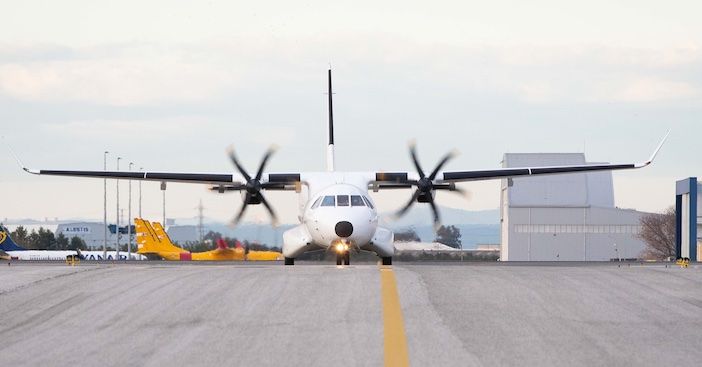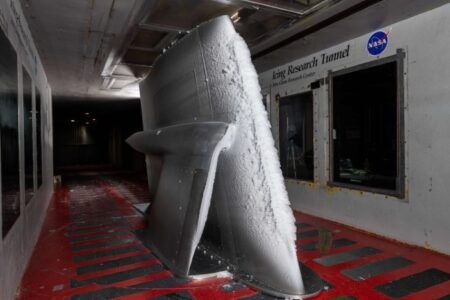Airbus has flown its C295 Flight Test Bed 2 aircraft from the Final Assembly Line in Seville, Spain for the first time, trialing a number of new technologies for regional multi-mission aircraft.
The C295 is used as a military transporter and tactical aircraft and for search and rescue missions. Built in Seville, the aircraft was developed in the late 1990s from the 1980s Spanish-Indonesian transport aircraft CASA/IPTN CN-235.
The C295 Flight Test Bed 2’s (FTB2) has been modified to flight test future technologies suitable for use in multi-mission aircraft. FTB2’s initial flight test campaign will demonstrate innovations developed for the European Clean Sky 2 (CS2) and the EU Horizon 2020 programs, including a semi-morphing wing, a more-affordable flight control system, and a SatCom antenna embedded within the aircraft’s fuselage.
Francisco Javier Sánchez Segura, executive vice president engineering at Airbus Defence and Space said, “The first flight of the C295 FTB2 is a key milestone that represents an important step forward in the program, following the successful integration of the new aero structures, power-on and ground tests.
“A few years ago this program was just a dream of a more sustainable future for aviation. Today we are at the final stage and we finally made it fly.”
The main modifications to the aircraft are a new high-efficiency semi-morphing wing, new dynamic winglets and a flat panel SatCom antenna integrated within the top of the fuselage.
Other modifications made to FTB2 being examined include new materials and technologies designed to achieve noise, carbon dioxide and NOx emissions reduction. Engineers are targeting 43% carbon dioxide and 70% NOx reductions using these technologies for a typical search and rescue mission of 460 miles (740km), as well as 45% less noise during take-off.
In addition, innovative flight controls for primary control surfaces, including ailerons, flaps and flap tabs with improved aerodynamics, are capable of adjusting in-flight and contribute to a more efficient high lift system.
The new flight control system leverages digital control systems to optimize the aerodynamic shape of the wing in flight, while a new multifunctional flap has been completely redesigned and includes flap tabs in the trailing edge controlled by electro-mechanical actuators.

Advanced materials and manufacturing technologies have been used to build FTB2, including the use of additive manufacturing (AM) and Scalmalloy, a high strength aluminum alloy used in AM processes. A new assembly method has been used for the aero structures of the wing and a one-shot assembly approach has been used for the new composite winglet and winglet tab, moving from the conventional ribs approach to a multi-spar integrated torsion box.
Finally, jig-less methods have been used for the assembly of flaps and ailerons.
As a result, the C295 FTB2 brings improvements not only to the purely operational aspects of the aircraft but helps introduce new improvement to the design and manufacturing process.




